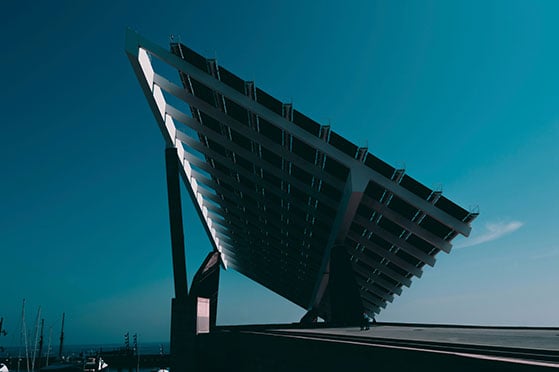
Sustainability: 'the quality of causing little or no damage and therefore able to continue for a long time.'
When I was growing up, beyond the year 2000 was the realm of flying cars and imagination stretching technology. As a child, our future eclipsed the past as the greatest time to date. Yet as science progressed and developed a data-driven prediction of the future, we came to realise that our generation’s direction came at a cost. Slowly, that cost amplified on our radar, we noticed interconnections and knock-on effects. Animals that had been in existence for millions of years became extinct, rainforests were levelled and chlorine releasing CFCs literally digested our atmosphere. The next generations reality is very different. When looking forward to 2100 and beyond the very real, data derived prediction is that Earth may not be habitable at all.
It has taken us years to understand this threat because it is so complex, and our solution to sustainability, even though Earth-saving, is equally complicated. Sustainability is myriad – it’s a word that encompasses so much and sits within what is now the fastest growing global sector. In practical terms, this means that each time you open your inbox, you see new developments, new ideas and new goals. You may be speaking the language of waste hierarchy, energy efficiency, mental health first aid and community engagement. However, in the same company, your colleagues could be completing annual reports that communicate your progress using the language of the Plastics Pact, the United Nation’s SDGs, circular economy or social value.
Concentrating on broader brushstrokes then, what is at the heart of sustainability? I like to visualise sustainability as a small village – let’s call it Rioville. This village has three key goals – an environmental, a commercial and a social goal.
• ENVIRONMENTAL: Rioville has a small factory that produces hugely sought-after onesies. The factory approaches the environmental side of sustainability by aiming to become more and more invisible. Its energy and water use, as well as waste, raw materials, deliverables and reuse data are monitored, reported and discussed. As the factory becomes more efficient, its lifespan increases. With water that remains safe to drink, clean air to breathe and energy return from recycled heat to local homes, the community also remains healthy and productive.
• COMMERCIAL: To approach the commercial pillar of sustainability, each resident and business consider ethical trade schemes when buying from other areas and countries. This means that the food, coffee and clothes purchased regularly can continue to be purchased in the future, as the source communities continue to have a sustainable livelihood.
• SOCIAL: Rioville understands that social sustainability is also a key pillar. By supporting a diverse workforce with an emphasis on equality, physical and mental health, and continued education; the village ensures that the community is stronger and more adaptable for the years to come.
Now scale the village model up for your company or country and it quickly becomes apparent how large sustainability is. Rioville can work hard but needs neighbouring villages and cities to do the same, if it's good work isn’t to be eradicated. For companies and countries, handling so much data, on numerous targets and regulations means that it’s easy to become overwhelmed. We can spend so much time working on data input and manual interrogation that exciting connections are often missed – connecting links that could save valuable time and money on these complex endeavours.
Current headlines show today’s children striking globally on climate change, national protests outside banks providing loans to companies harming the planet, Sir. David Attenborough calling us to (green) arms and the incredible public attention on organisations’ sustainable activities. It’s clear that we have the determination but it’s also evident that we’re running out of time. For me, seeing Ditto Sustainability’s timely and tangible improvement work with some of the UK’s largest companies was an eye-opener. However, realising the Artificial Intelligence (AI) strength of Ditto’s platform was the game changer. Like moving from a stethoscope to an MRI, transparent AI affords companies an understanding of their waste, energy and water data clearly and effortlessly, from all angles. Being able to seamlessly input and interrogate such data means that companies can gain essential time and cost savings – savings that the next generation may agree (if well used) are worth their weight in polar bears.


